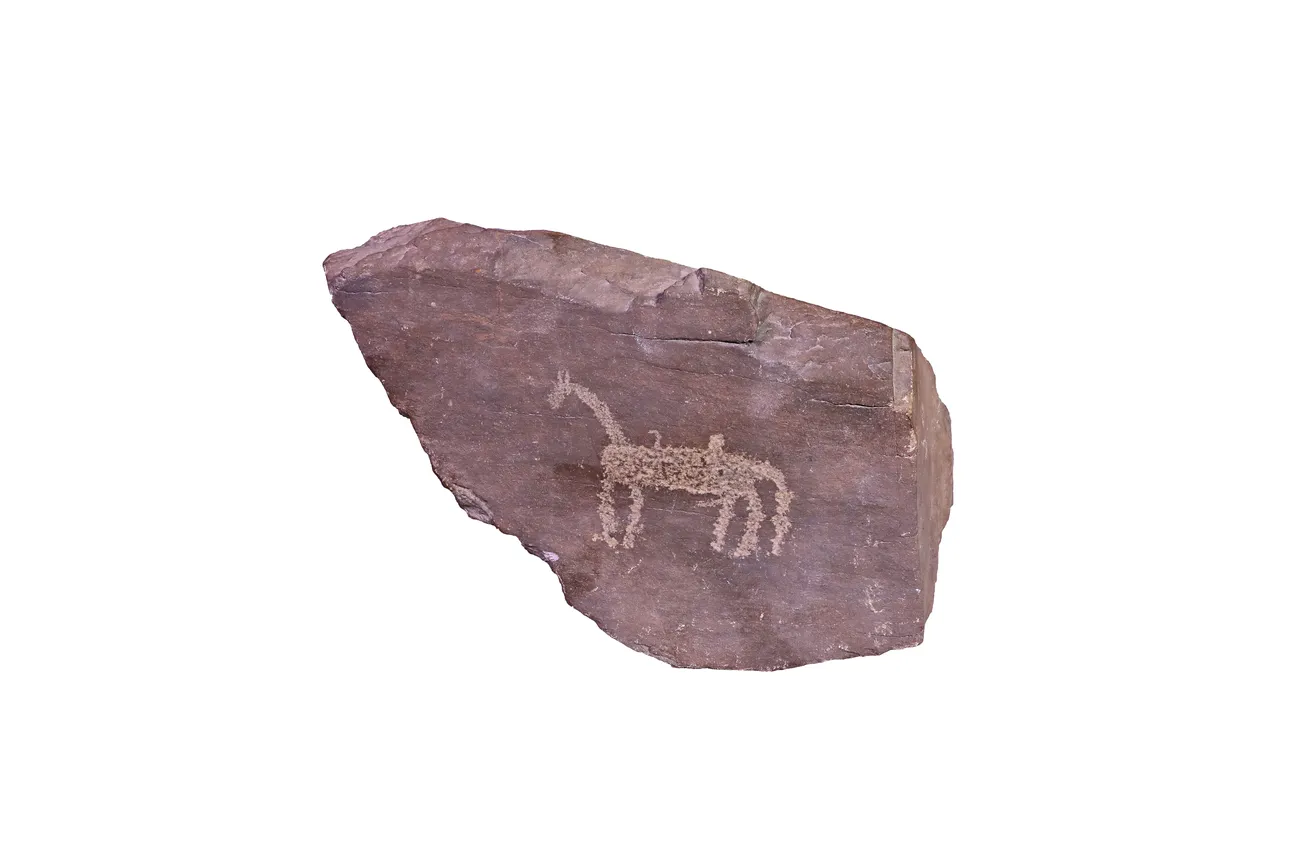Therefore, the earliest art forms appeared in Uzbekistan in the 13th-5th millennium BCE. However, in the primitive society, art did not have pronounced regulatory social, ideological and conscious artistic and aesthetic functions.
Cultural monuments from these periods do not quite fit the concept of art, but they are important in terms of the genesis of artistic forms in crafts.

Hunting scenes, various animals and human figures are depicted on the surface of rocks. Stone Age rock paintings have also been found in the caves of Zarautsay, Teshiktash and Obirahmat in the south of Uzbekistan, in the mountains near Tashkent, in the areas of Chimgan, Chatkal and Beldersay, and in the caves of Sarmyshsay in Navoi region. The traditions launched by primitive artists were continued in the Neolithic (6th-4th millennia BCE).
The Samarkand Museum boasts interesting examples of rock paintings discovered in the caves of Sarmyshsay in Navoi region depicting various animals - mountain sheep, horses, goats and other.

You can learn more about the topic in the book-album Collection of the Samarkand State Museum-Reserve (Volume XVIII) from the Cultural Legacy of Uzbekistan in the World Collections series.
The main sponsor of the project is the oilfield services company Eriell Group.
